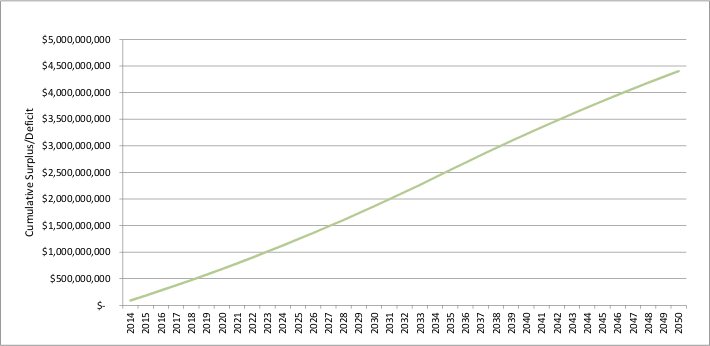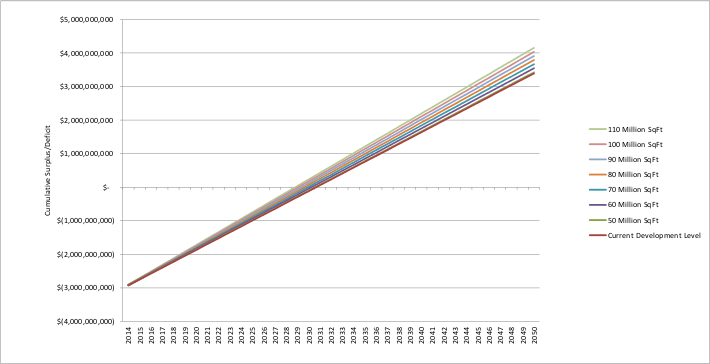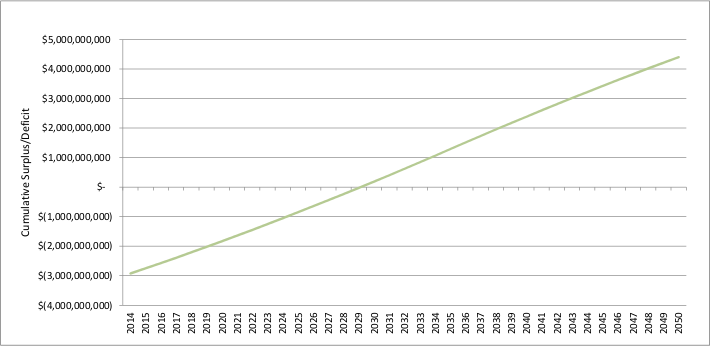Does the County’s Comprehensive Plan for Tysons mean a net improvement for the Fairfax County budget or subsidization of urban development? That is a question that continues to hang around despite years having passed since the approval of the plan.
With significant costs that came along with the Tysons vision, most notably the Silver Line Phase 1 and Table 7 road infrastructure, came criticism of the County during a time when the budget is strained. Certainly, billion dollar investments in the Silver Line and the planned $2.5 billion in urban infrastructure are huge eye popping numbers, but many forget that the investments last over 37 years based on the Comprehensive Plan. Many of those costs are triggered if and only if the development happens, which means some of those costs may never occur if the plans for a city never aggregate.
So what does that all mean? The following is a basic table showing what each development level means in terms of revenue versus cost. The tax revenue information comes from the 2013 Fairfax County land values with an average applied tax rate of $1.15 per $100. The future developed tax revenue assumes a similar assessed value per square foot of development, a conservative assumption as new development typically is higher assessed per square foot.
The schools cost comes from a $12,000 per pupil average cost, with a current public school enrollment within Tysons of approximately 1000 constituting approximately 5.5% of the population. This has been anticipated to grow to 16% in line with the rest of the county, or 16,000 total students. This only occurs if all of the anticipated development occurs, and therefore is incremental based on development level.
The Table 7 infrastructure costs are based on a zero cost at current development levels, increasing to a total $2.5 billion cost at full build out. This again, is dependent on development levels, and therefore is an incremental cost, and would be spread across 37 years.
The Silver Line subsidy is for operation costs expected from the region specific to the Silver Line. The Silver Line cost includes the entirety of the Phase 1 construction cost, including private parking construction which was not a public cost, as well as the station and line that goes to Wiehle Avenue (outside of Tysons). This can either be viewed as a one time cost up front, or a spread cost over the next 37 years.
The benefits of the Tysons Comprehensive Plan can be best summarized by the following four charts.
Assuming Annual Spread Cost of Silver Line
Assuming One Time Cost of Silver Line
Ultimately, the Silver Line, Table 7 improvements, and school funding are all met and exceeded with a cumulative 37 year surplus of $4.4 billion. That represents an increase from the base line (with no new development $3.4 billion) of $1.0 billion in revenue, which would not have otherwise been created.





